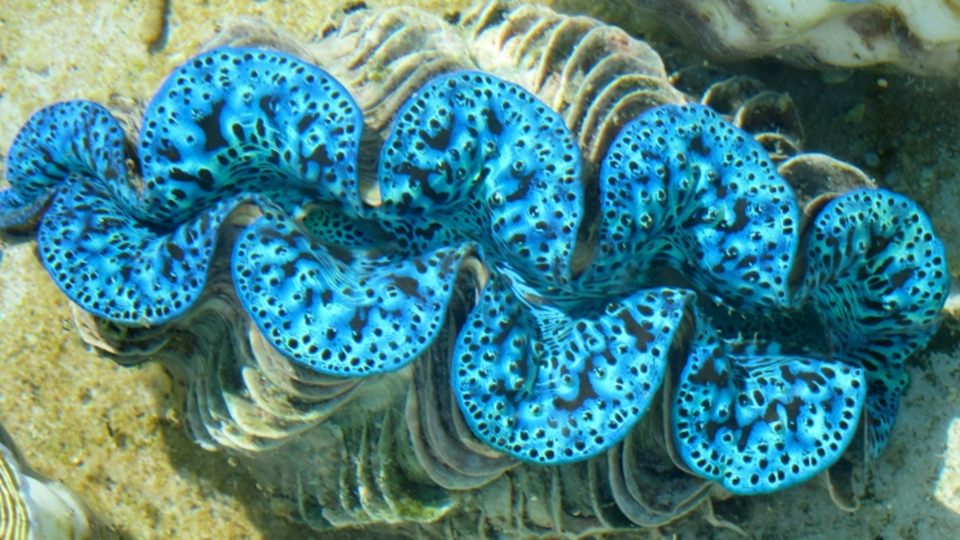Science News
Social Sharks, Solar Clams, and Crazy Beetles

Super-cool animal studies that may surprise you...
Sharks with personality!

Can sharks be shy? Gregarious? Well, just as with people, it depends on the shark, according to a new study inBehavioral Ecology and Sociobiology.
Researchers recorded the social interactions of groups of juvenile small spotted catsharks (Scyliorhinus canicula) in captivity under three different habitat types. They found that the sharks demonstrated consistent behavior in each new location. When social sharks from one habitat were moved to other habitats they easily found friends in other tanks. And the loners remained alone.
“Well-connected individuals formed conspicuous groups, while less social individuals tended to camouflage alone, matching their skin color with the color of the gravel substrate in the bottom of the tank,” says lead author David Jacoby, of the Institute of Zoology in London.
Co-author Darren Croft of the University of Exeter adds, “We define personality as a repeatable behavior across time and contexts. What is interesting is that these behaviors differ consistently among individuals. This study shows, for the first time, that individual sharks possess social personalities.”
Image: Thomas Ernst/Wikipedia
Clams that kiss the sun for energy

Giant clams have lips, also known as their mantles, that possess iridescent structures, cells known as iridocytes. But why? “Many mollusks, like squid, octopuses, snails and cuttlefish have iridescent structures,” says physicist Alison Sweeney of the University of Pennsylvania. “But almost all use them for camouflage or for signaling to mates. We knew giant clams weren’t doing either of those things, so we wanted to know what they were using them for.”
The team developed a strong hypothesis: perhaps the iridocytes gather sunlight for the symbiotic algae that live on the clam. These algae convert sunlight into a source of nutrition for the clam, but at the tropical latitudes where these clams live, sunlight is so intense that it can disrupt the algae’s photosynthesis, paradoxically reducing their ability to generate energy. Could the iridocytes somehow diffuse the light to make it more tolerable for the algae?
To determine this, the team looked at the clams’ geometry. Examining precise cross sections of the clams, the scientists observed algae organized into pillars, with a layer of iridocytes at the top. “When we saw the complete picture, we understood that the pillars are oriented exactly the wrong way if you want to catch sunlight,” Sweeney says. “That's where the iridocytes come into play.”
Further analysis suggested that the iridocytes scattered many wavelengths of light in a cone-like distribution spreading deeper into the clam. Red and blue wavelengths, the most useful to the algae, spread the widest, impacting the sides of the pillars in which the single-celled plants were stacked.
“We see that, at any vertical position within the clam tissue, the light comes in at just about the highest rate at which these algae can make use of photons most efficiently,” Sweeney says. “The entire system is scaled so the algae absorb light exactly at the rate where they are happiest.”
The authors say this research, published last week in theJournal of the Royal Society Interface, could lead to new approaches for boosting the efficiency of photovoltaic cells without having to precisely engineer structures on the nanoscale. Clam solar power!
Image: Daniel Morse
Ant-loving beetles

Clavigeritae beetles practice myrmecophily—they love them some ants. In fact, these beetles have evolved in such a way that they couldn’t survive without ants! Their mouthparts are recessed inside the head in order to accept liquid food from the ant, literally mouth-to-mouth.
Other adaptations include fusions of segments within the abdomen and antennae—likely meant to provide additional protection from the ants, which often pick the beetles up and carry them around the nest—and glands that cover the body with oily secretions with thick brushes of hair on top of their abdomens, called trichomes, which act as candlewicks for the secretions. “If you watch one of these beetles interact inside an ant colony, you’ll see the ants running up to it and licking those brush-like structures,” says Joseph Parker of Columbia University.
While there are about 370 described species belonging to Clavigeritae, the beetles are quite rare, so Parker was shocked when David Grimaldi of the American Museum of Natural History brought him a 52 million-year-old beetle fossil that closely resembled the ant-loving species. The Eocene fossil came from an amber deposit in what was once a rainforest environment in current-day India. Although its body resembles modern Clavigeritae beetles, with two stark, hook-like trichomes, some of its characteristics are clearly more primitive. The team published the new finding last week in Current Biology, calling the ancient species Protoclaviger trichodens.
“Protoclaviger is a truly transitional fossil,” Parker says. “It marks a big step along the pathway that led to the highly modified social parasites we see today, and it helps us figure out the sequence of events that led to this sophisticated morphology.”
Parker and Grimaldi also report that the fossil is the oldest evidence of myrmecophily, present at a time when ants were just emerging on Earth, meaning these beetles have loved ants from the very beginning.
Image: Parker and Grimaldi, Current Biology